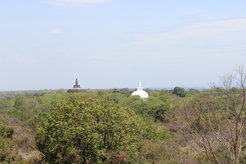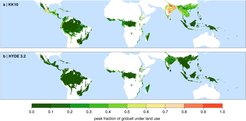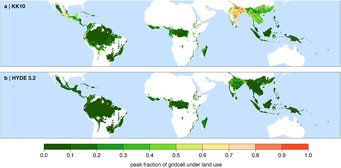Pre-Industrial Anthropocene in Tropical Forests
New Publication in the journal Anthropocene.

It has been suggested that our planet has now entered a new era – that of the ‘Anthropocene’ – when our species dominates global climate, biodiversity, geology, and the cryosphere (or ice-caps). While geologists and ecologists debate the actual timing, most arguments focus on fossil fuel consumption, associated with the Industrial Revolutions of the 18th and 19th centuries, or later technological developments, including nuclear testing, during the 1960s. Earlier human impacts on global environments are acknowledged, but seen as different, more localized occurrences.
This perspective is also seen, more specifically, in conservation and ecological discussions of tropical forest ecosystems, with extensive human alteration often being linked to the expansion of plantation agriculture, urbanism, industrial logging, mining, and ranching in the 21st century. Yet, given that tropical forests, with their high plant and animal diversity, key role in soil stability, and integral position in precipitation and temperature regulation, are key parts of earth systems, even local alterations can have planetary-scale consequences.

Peak land use in tropical forests prior to AD 1750. The maximum magnitude of land use as the fraction of each 5 arc-minute grid cell in the (a) KK10 (Kaplan et al., 2011) and (b) HYDE (v3.2, Klein Goldewijk et al., 2017) Anthropogenic Land Cover Change scenarios are plotted for the regions defined as tropical forest according to the WWF terrestrial ecoregions map (Olson et al., 2011).
In this paper, researchers from the Department of Archaeology, led by Dr. Patrick Roberts, argue that existing models of pre-industrial impacts on tropical forests, and therefore climate systems more broadly, are inadequate. Instead, reviewing prehistoric archaeological data, they argue that by the Late, pre-industrial Holocene, if not earlier, human societies from across the tropics were having land-use and clearance impacts on tropical forests that could have had continental, and perhaps global, results in the form of soil erosion, changing precipitation amounts and seasonality, and reductions in plant and animal diversity.
This argument does not, however, justify current human impacts on tropical forests. Instead, the authors hope that recognition of archaeological and prehistoric environmental records as critical repositories of information relating to human-tropical forest interactions will enable long-term perspectives on the sustainable occupation and use of these threatened environments. As more and more members of our species move into tropical forests over the course of the next century, the authors seek to demonstrate that the social sciences are critical in analyzing changing relationships between our species and its increasingly global environment.

